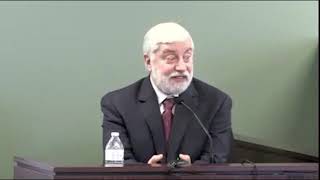

The Expert: Dr. Joseph DiFranza, a Massachusetts physician who concludes that the plaintiff was addicted to nicotine.

During a 2019 tobacco trial in Massachusetts, Dr. Joseph DiFranza, a board-certified family practitioner affiliated with the University of Massachusetts Memorial Medical Center who is widely known for his research and expertise on the addictiveness of nicotine and the dangers of smoking tobacco, testifies about several methods of diagnosing and quantifying cigarette addiction.
Plaintiff contends the defendant tobacco company was responsible for addicting her to nicotine, which ultimately led to her lung cancer. At trial, DiFranza begins by presenting 12 criteria that the smoker had that would define her as an addict for nicotine. Only one of these criteria was needed, but she had all 12. Her positive criteria: she had craving, more than 20 failed “quit attempts,” she “felt addicted” before hearing warnings from the tobacco company that smoking would lead to addiction, she reluctantly restricted her social activities since she would have to meet people in places that did not allow smoking, she described typical withdrawal symptoms when trying to quit, she gained weight when trying to quit, she smoked longer than intended (after trying to stop as a teenager) taking over 15 years to stop, she suffered from lung inadequacy that prevented her from taking part in athletic events that she use to enjoy, her latency to withdrawal became shorter and shorter, she smoked in bed (a physically hazardous situation), and found it difficult to comply with places that restricted smoking. The expert concluded that the plaintiff was definitely addicted.
The expert said other tests, used by those treating nicotine addiction, were also applied in this case. Among them, The Diagnostic and Statistical Manual [DSM] Fourth Edition was produced by the American Psychiatric Association and requires three of seven criteria to be positive. The plaintiff had five of the seven: unsuccessful efforts to cut back on smoking, using nicotine longer than intended, withdrawal symptoms, increasing tolerance, and restriction of recreational activities due to smoking. Eventually, the expert explains, the DSM Fifth Edition was published, supplanting the earlier edition. This required only two of the criteria be met; thus, she was addicted according to this newer standard as well. The addiction defined in DSM 5 is further graded into severity based upon a point system. According to DiFranza, this patient’s addiction would be classified as “severe” under the DSM 5.
DiFranza notes that he authored the book “The Hooked on Nicotine Checklist” which is internationally recognized and used. This asks 10 questions.
The patient answered positively to each of these 10 questions. According to DiFranza, she only needed to answer one of the ten positively to be considered addicted. The average adult smoker would score 7 positive; under this checklist, the patient was considered a severe addict.
The doctor’s research and experience came through strongly in this case and the verdict reflected his conclusion that the plaintiff had been severely addicted to smoking despite all efforts to correct this. The jury awarded $9.68 million.
Gary Gansar, MD, is residency-trained in general surgery. He served as Chief of Surgery and Staff at Elmwood Medical Center and on the Medical Executive Committee at Touro Infirmary and Mercy Hospital in New Orleans, LA. Dr. Gansar was Board Certified in general surgery while in active practice. He joined AMFS in 2015 as a Physician Medical Director.
The medical expert witness partner for attorneys serious about building a winning case
AMFS is your trusted source for highly-qualified medical expert witnesses. After pioneering the field nearly three decades ago, we’re continuing to redefine medical expert witness services by providing value far beyond a referral alone.
Our Physician Medical Directors know what it takes to build a strong case. Our medical expert witnesses leave no doubt. And our case managers streamline billing and logistics every step of the way, letting you focus on what you do best: constructing your winning case. Explore why AMFS clients expect more from their medical expert witnesses—and get it.
